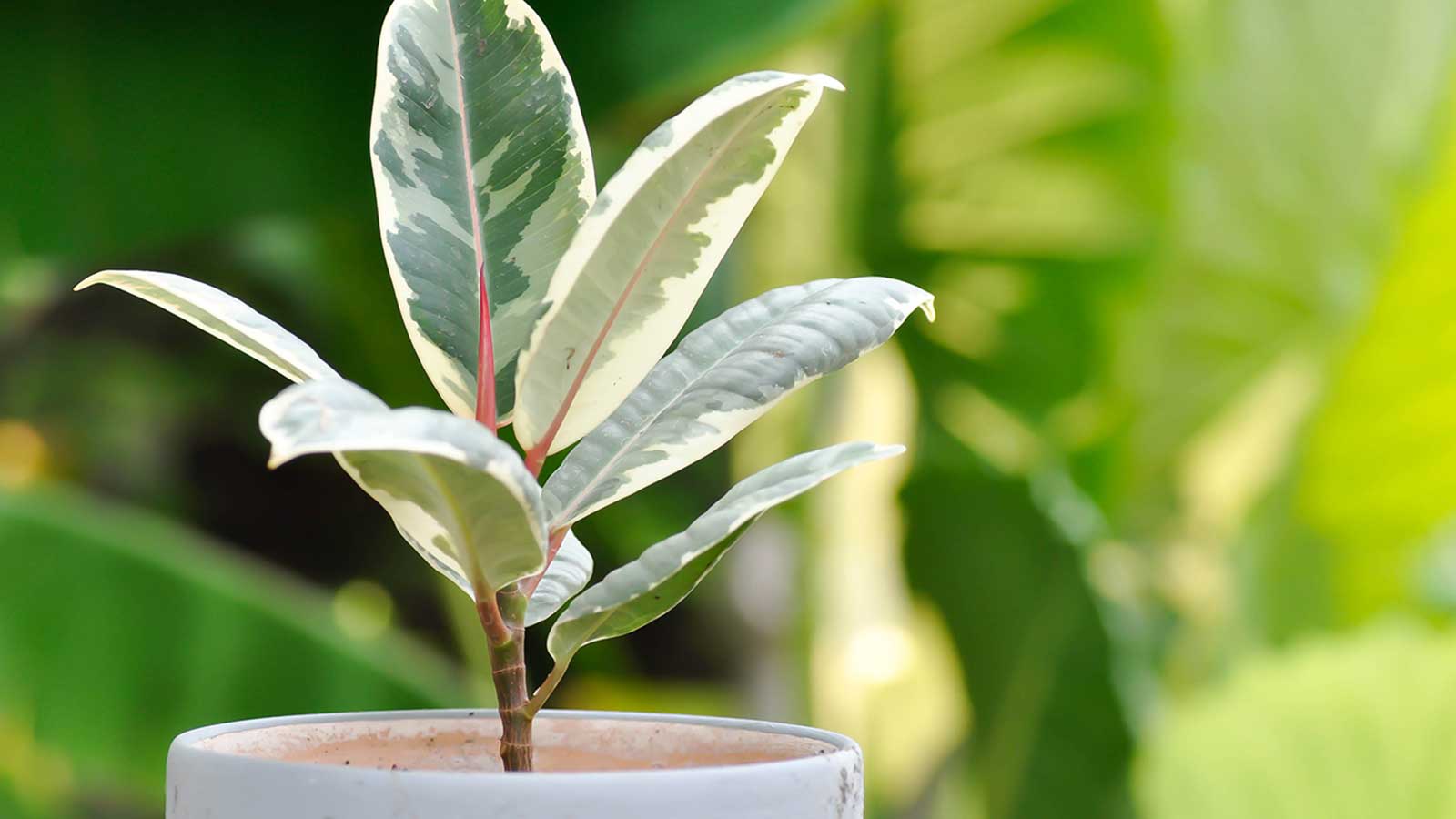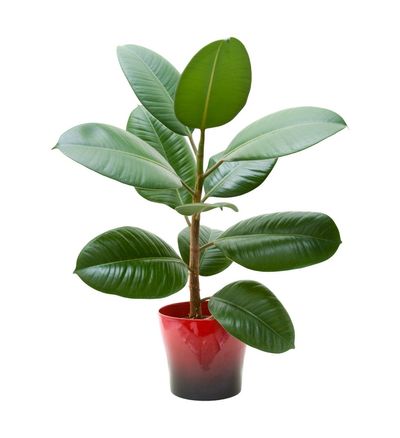Understanding the Basics of Rubber Plant Care
Rubber plants, also known as Ficus elastica, have been a popular choice for indoor gardening for centuries. Native to Southeast Asia, these plants are prized for their large, dark green leaves and ability to thrive in low-maintenance conditions. With the right care, a rubber plant can grow up to 8 feet tall and live for many years. However, to achieve this level of success, it’s essential to understand the basics of rubber plant care. In this article, we’ll explore the key factors to consider when growing a rubber plant, from lighting and temperature to watering and fertilizing.
One of the most significant advantages of growing a rubber plant is its ability to tolerate a range of lighting conditions. While they prefer bright, indirect light, they can also thrive in low-light environments, making them an excellent choice for rooms with limited natural light. However, it’s essential to avoid direct sunlight, which can cause the leaves to become scorched and the plant to become stressed.
In addition to lighting, temperature is also a critical factor to consider when growing a rubber plant. These plants prefer temperatures between 65-75°F (18-24°C), making them an excellent choice for indoor spaces with a consistent temperature. Avoid placing your rubber plant near heating or cooling vents, fireplaces, or drafty windows, as this can cause the temperature to fluctuate and stress the plant.
By understanding the basics of rubber plant care, you can set your plant up for success and enjoy the many benefits of growing a thriving rubber plant. Whether you’re a seasoned gardener or a beginner, with the right care and attention, your rubber plant can become a stunning and low-maintenance addition to your indoor space. In the following sections, we’ll delve deeper into the specifics of rubber plant care, including how to water, fertilize, and prune your plant for optimal growth.
Choosing the Right Environment for Your Rubber Plant
When it comes to growing a thriving rubber plant, one of the most critical factors to consider is the environment in which it will thrive. Rubber plants prefer bright, indirect light, but can tolerate low light conditions, making them an excellent choice for rooms with limited natural light. However, it’s essential to avoid direct sunlight, which can cause the leaves to become scorched and the plant to become stressed.
To assess the light levels in your home, hold your hand 12 inches above the soil surface. If your hand casts a clear shadow, the light is too intense, and you should consider moving the plant to a spot with filtered or dappled light. On the other hand, if your hand doesn’t cast a shadow, the light is too low, and you may need to supplement with grow lights.
In addition to lighting, temperature is also a critical factor to consider when growing a rubber plant. These plants prefer temperatures between 65-75°F (18-24°C), making them an excellent choice for indoor spaces with a consistent temperature. Avoid placing your rubber plant near heating or cooling vents, fireplaces, or drafty windows, as this can cause the temperature to fluctuate and stress the plant.
Humidity is another essential factor to consider when growing a rubber plant. These plants prefer a relatively high humidity, typically above 50%. To maintain the optimal humidity level, you can place the plant on a tray filled with water and pebbles or use a humidifier nearby. By controlling the humidity level, you can help prevent pests and diseases that thrive in dry environments.
By providing your rubber plant with the right environment, you can set it up for success and enjoy the many benefits of growing a thriving rubber plant. Whether you’re a seasoned gardener or a beginner, with the right care and attention, your rubber plant can become a stunning and low-maintenance addition to your indoor space. In the next section, we’ll explore the importance of proper watering techniques for rubber plants and provide tips on how to get it right.
Watering Your Rubber Plant: A Guide to Getting it Right
Watering is one of the most critical aspects of rubber plant care. Overwatering and underwatering can both be detrimental to the health of your plant, so it’s essential to get it right. When learning how to grow a rubber plant, it’s crucial to understand the importance of proper watering techniques.
The key to watering your rubber plant is to check the soil moisture regularly. Stick your finger into the soil up to the first knuckle, and if the soil feels dry, it’s time to water. If the soil feels damp or wet, wait a few more days before watering again. This simple technique will help you avoid overwatering, which can lead to root rot and other problems.
Another way to check the soil moisture is to lift the pot. A dry pot will be much lighter than a pot with moist soil. This method is especially useful for larger pots, where it may be more difficult to stick your finger into the soil.
When watering your rubber plant, make sure to water thoroughly. Water should flow out of the bottom of the pot, indicating that the soil is fully saturated. However, make sure not to overwater, as this can cause more harm than good.
It’s also essential to consider the time of year when watering your rubber plant. During the spring and summer months, your plant will require more water due to increased growth. However, during the fall and winter months, your plant will require less water, as growth slows down.
By following these simple tips, you can ensure that your rubber plant receives the right amount of water. Remember, it’s always better to err on the side of caution and underwater slightly, rather than overwatering and risking root rot. In the next section, we’ll explore the benefits of fertilizing your rubber plant and provide tips on how to choose the right fertilizer.
Fertilizing Your Rubber Plant for Optimal Growth
Fertilizing your rubber plant is an essential part of its care routine. Fertilizers provide the necessary nutrients for healthy growth and development, and can help to promote lush, green leaves and strong stems. When learning how to grow a rubber plant, it’s crucial to understand the importance of fertilizing and how to choose the right fertilizer.
There are many types of fertilizers available, but not all of them are suitable for rubber plants. Look for a balanced fertilizer that contains equal amounts of nitrogen, phosphorus, and potassium (NPK). A balanced fertilizer will promote healthy growth and development, without causing an overabundance of any one nutrient.
It’s also important to consider the frequency of fertilization. Rubber plants should be fertilized during the growing season, which typically runs from spring to fall. During this time, fertilize your plant once a month with a balanced fertilizer. However, during the winter months, when growth slows down, you can reduce fertilization to once every two months.
When fertilizing your rubber plant, make sure to follow the instructions on the fertilizer package carefully. Overfertilizing can be detrimental to your plant’s health, so it’s essential to avoid applying too much fertilizer. Start with a small amount and gradually increase as needed.
In addition to using a balanced fertilizer, you can also use organic fertilizers such as compost or manure tea. These fertilizers are rich in nutrients and can help to promote healthy growth and development. However, make sure to use them in moderation, as they can be quite potent.
By fertilizing your rubber plant regularly, you can promote healthy growth and development, and help to maintain its lush, green leaves and strong stems. In the next section, we’ll explore the importance of pruning and training your rubber plant to maintain its shape and promote healthy growth.
Pruning and Training Your Rubber Plant for a Fuller Shape
Pruning and training are essential techniques for maintaining the shape and promoting healthy growth of your rubber plant. By pruning your plant regularly, you can encourage bushy growth, remove dead or damaged leaves, and maintain a desired shape. When learning how to grow a rubber plant, it’s crucial to understand the importance of pruning and training.
To prune your rubber plant, start by removing any dead or damaged leaves. This will help prevent the spread of disease and encourage healthy growth. Use a pair of clean, sharp scissors or pruning shears to remove the affected leaves. Make sure to cut just above a node, which is the point where a leaf meets the stem.
In addition to removing dead or damaged leaves, you can also prune your rubber plant to maintain a desired shape. If your plant is becoming too leggy, you can prune the stems to encourage bushy growth. Simply cut the stems back to about half their length, and new growth will emerge from the nodes.
Training your rubber plant is also an important part of its care routine. By training the stems to grow upwards, you can create a fuller, more compact plant. To train your plant, simply tie the stems to a stake or trellis using a soft material like twine or a plant tie. This will help support the stems and encourage them to grow upwards.
Another technique for training your rubber plant is to use a technique called “pinching.” Pinching involves removing the growing tip of the stem, which encourages the plant to produce more lateral growth. To pinch your plant, simply remove the growing tip of the stem using a pair of clean, sharp scissors or pruning shears.
By pruning and training your rubber plant regularly, you can maintain its shape and promote healthy growth. Remember to prune your plant regularly to encourage bushy growth and remove dead or damaged leaves. With proper pruning and training, your rubber plant can become a stunning and compact addition to your indoor space.
Pest Control and Common Problems with Rubber Plants
Rubber plants are generally hardy and resistant to pests, but they can still be susceptible to certain issues. When learning how to grow a rubber plant, it’s essential to be aware of the common pests and problems that can affect these plants.
One of the most common pests that can affect rubber plants is spider mites. These tiny, spider-like insects can cause yellowing or bronzing of the leaves, and can be difficult to detect. To control spider mites, use a gentle insecticidal soap or neem oil, and make sure to spray the undersides of the leaves where the mites tend to congregate.
Mealybugs are another common pest that can affect rubber plants. These small, white insects can cause stunted growth and yellowing of the leaves, and can be difficult to control. To control mealybugs, use a gentle insecticidal soap or neem oil, and make sure to spray the undersides of the leaves where the mealybugs tend to congregate.
Root rot is a common problem that can affect rubber plants, especially if the soil is too wet or if the plant is not receiving enough light. To prevent root rot, make sure to water your plant carefully, and avoid getting water on the leaves or crown of the plant. If you suspect that your plant has root rot, repot it in fresh, well-draining soil, and prune any affected roots.
Other common problems that can affect rubber plants include leaf drop, yellowing leaves, and droopy stems. These issues can be caused by a variety of factors, including overwatering, underwatering, or exposure to extreme temperatures. To troubleshoot these issues, make sure to check the soil moisture, adjust your watering schedule accordingly, and provide your plant with bright, indirect light.
By being aware of the common pests and problems that can affect rubber plants, you can take steps to prevent them from occurring in the first place. Regularly inspect your plant for signs of pests or disease, and take action quickly if you notice any issues. With proper care and attention, your rubber plant can thrive and provide you with years of enjoyment.
Repotting Your Rubber Plant: A Step-by-Step Guide
Repotting your rubber plant is an essential part of its care routine. As your plant grows, it will eventually outgrow its container and need to be transplanted into a larger pot. When learning how to grow a rubber plant, it’s crucial to understand the importance of repotting and how to do it correctly.
Before repotting your rubber plant, make sure to choose a pot that is only slightly larger than the original one. A pot that is too large can cause the soil to become too wet, leading to root rot. Also, choose a potting mix that is well-draining and specifically designed for tropical plants like rubber plants.
To repot your rubber plant, start by gently removing it from its original pot. Take care not to damage the roots or disturb the soil. If the plant is stuck, you can run a knife or spatula around the inside of the pot to loosen it.
Once the plant is removed from its pot, inspect the roots and trim any that are circling or growing out of the pot. This will help to encourage new growth and prevent the roots from becoming pot-bound.
Next, place the plant in its new pot and add fresh potting mix around the roots. Make sure to leave enough space between the soil surface and the top of the pot for watering. Water the plant thoroughly after repotting and keep the soil consistently moist but not waterlogged.
After repotting, your rubber plant may experience a period of adjustment as it gets used to its new environment. Keep an eye on the plant’s condition and adjust your care routine as needed. With proper care and attention, your rubber plant should thrive in its new pot and continue to grow and flourish.
Troubleshooting Common Issues with Rubber Plant Growth
Despite proper care, rubber plants can still experience issues that affect their growth. When learning how to grow a rubber plant, it’s essential to be aware of these common issues and know how to troubleshoot them.
One common issue that can affect rubber plant growth is slow growth. This can be caused by a lack of light, inadequate fertilization, or root bound conditions. To address slow growth, make sure to provide your plant with bright, indirect light, and fertilize it regularly with a balanced fertilizer. Also, check the roots of your plant and repot it in a larger container if necessary.
Yellowing leaves are another common issue that can affect rubber plants. This can be caused by overwatering, underwatering, or exposure to extreme temperatures. To address yellowing leaves, adjust your watering schedule accordingly, and make sure to provide your plant with a consistent temperature between 65-75°F (18-24°C).
Droopy stems are also a common issue that can affect rubber plants. This can be caused by a lack of light, inadequate fertilization, or root bound conditions. To address droopy stems, make sure to provide your plant with bright, indirect light, and fertilize it regularly with a balanced fertilizer. Also, check the roots of your plant and repot it in a larger container if necessary.
By being aware of these common issues and knowing how to troubleshoot them, you can help your rubber plant grow and thrive. Remember to monitor your plant’s condition regularly, and adjust your care routine accordingly. With proper care and attention, your rubber plant can become a stunning and healthy addition to your indoor space.








